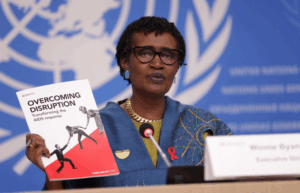Despite major successes in the global fight against tobacco use, the World Health Organization (WHO) warns of the rise in vaping among young people—a trend that threatens to undo decades of progress. Fifteen years after the launch of large-scale global anti-tobacco campaigns, the battle is far from over.
The WHO’s latest report, published on Monday, shows a sharp decline in the number of smokers worldwide: the share of adults using tobacco has dropped from 26% in 2010 to 19.5% in 2023. Yet the epidemic persists—one in five adults across the globe remains dependent on nicotine.
WHO Director-General Tedros Adhanom Ghebreyesus commended the millions of people who “quit or never start using tobacco thanks to the control policies implemented by countries worldwide.” However, he quickly warned: “In response to these advances, the tobacco industry is fighting back by launching new nicotine-based products and aggressively targeting young people. Governments must act faster and more decisively to enforce proven tobacco control policies.”
At the heart of the problem is vaping, a new gateway to nicotine addiction.
A Generation Trapped by E-Cigarettes
For the first time, the WHO’s analysis includes e-cigarette use among both adults and adolescents. The numbers are alarming: more than 100 million people now vape, including 86 million adults and at least 15 million adolescents aged 13 to 15.
On average, vaping among teenagers is nine times more common than among adults. The UN health agency is urging governments to close legal loopholes that still allow the industry to target young people, and to subject e-cigarettes and similar products to the same restrictions as tobacco.
“E-cigarettes are fueling a new wave of nicotine addiction,” said Étienne Krug, head of the WHO’s Department of Social Determinants of Health. “They are marketed as a less harmful alternative, but in reality, they hook young people on nicotine earlier and risk undoing decades of progress.”
Globally, 10% of adolescents report using one or more tobacco products. For the WHO, the risk is clear: the emergence of a new generation of addicts, shaped not by traditional cigarettes but by sleek, high-tech nicotine devices.
Uneven Progress Across Regions
The geography of smoking is shifting. In Southeast Asia, long considered the global epicenter of tobacco consumption, the proportion of men who smoke has nearly halved—from 70% in 2000 to 37% in 2023—a drop that accounts for more than half of the global decline.
Elsewhere, however, progress has been slower. Europe remains the region with the highest smoking rates, followed by the Western Pacific, while Africa shows the lowest prevalence.
The WHO forecasts a continued global decline by 2030—but only if governments step up efforts to counter the tobacco industry’s pushback. “Nearly 20% of adults still use tobacco or nicotine products. We cannot afford to ease up now,” warned Jeremy Farrar, the organization’s Assistant Director-General.







OTHER ARTICLES
Rift Valley Fever in Senegal: On the Frontline to Protect Communities
Zambia : commemorates world AIDS day
UNAIDS releases its 2025 World AIDS Day report: Overcoming disruption, transforming the AIDS response